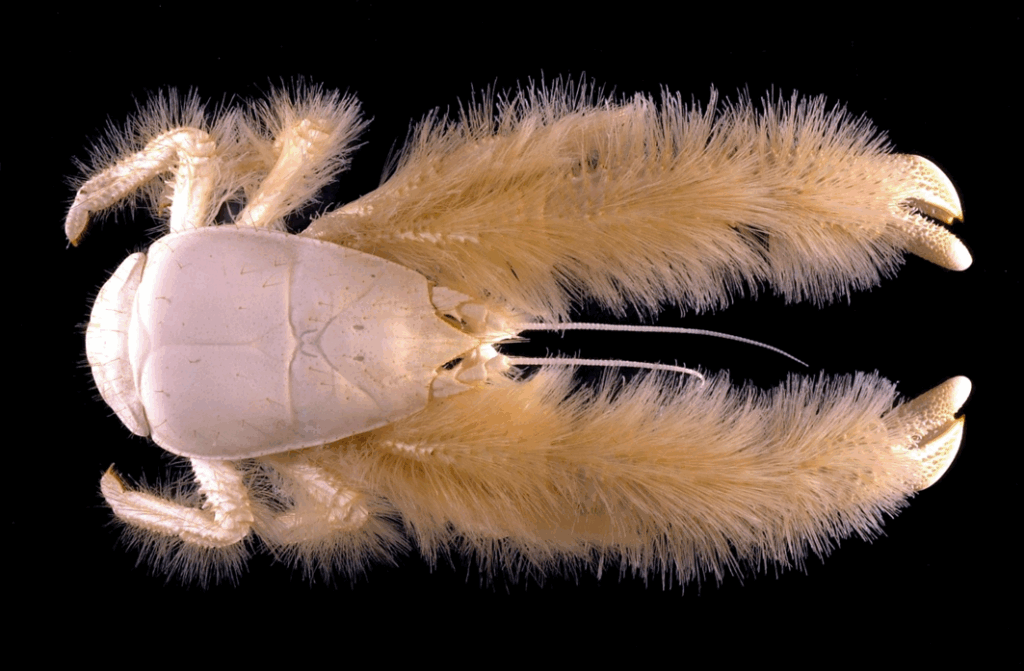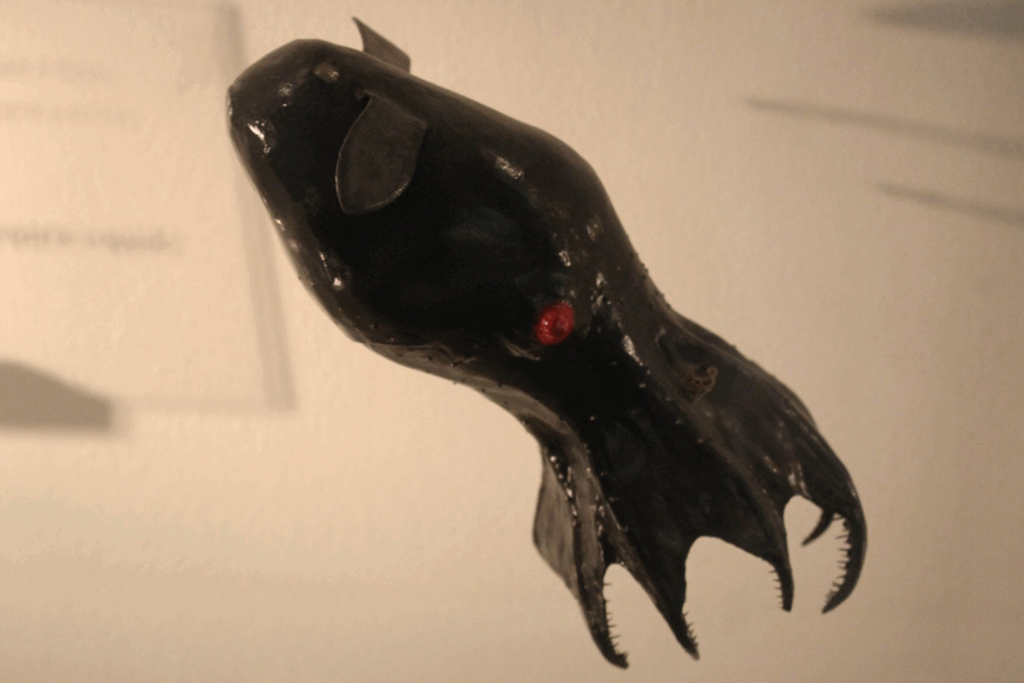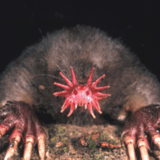No.7: Yeti Crab (Kiwa hirsuta)

Nicknamed the “Abominable Snowman of the Sea,” the Yeti Crab is a ghostly white, hairy-clawed crustacean discovered in 2005 near hydrothermal vents 7,200 feet (2,200 meters) down in the South Pacific. Nearly blind, with reduced eyes and long, silky setae (hair-like filaments) covering its arms, it looks like something out of a deep-sea fairytale.
But its lifestyle is even stranger: the Yeti Crab farms bacteria on its hairy claws, waving them over vent fluid so the microbes can feed on toxic chemicals. Later, it scrapes and eats the bacterial mats it has cultivated—a form of deep-sea “agriculture.” Sometimes, up to 700 crabs cluster in a single square meter, forming writhing carpets in the superheated gloom.
Equal parts bizarre and adorable, the Yeti Crab is a shining example of survival through innovation in Earth’s harshest environment.
No.6: Vampire Squid (Vampyroteuthis infernalis)

Its name literally means “vampire squid from hell,” and its appearance lives up to the hype—a jet-black body, webbed arms like a flowing cape, and eyes glowing crimson in the dark. But despite its fearsome look, the Vampire Squid is a peaceful scavenger, feeding on drifting organic matter known as “marine snow.”
Neither true squid nor octopus, it represents its own ancient order, Vampyromorphida. Though only about 12 inches (30 cm) long, it boasts some of the largest eyes in the animal kingdom relative to body size—a vital adaptation for the pitch-black deep.
When threatened, the Vampire Squid performs its signature move: the “inside-out cloak.” It folds its arms over its body, exposing spiny projections while tucking in vulnerable parts, a dramatic defense posture that inspired its name. Found in oxygen-depleted depths between 2,000 and 3,000 feet (600+ meters), this enigmatic cephalopod blends gothic horror with alien elegance—a true aristocrat of the abyss.


